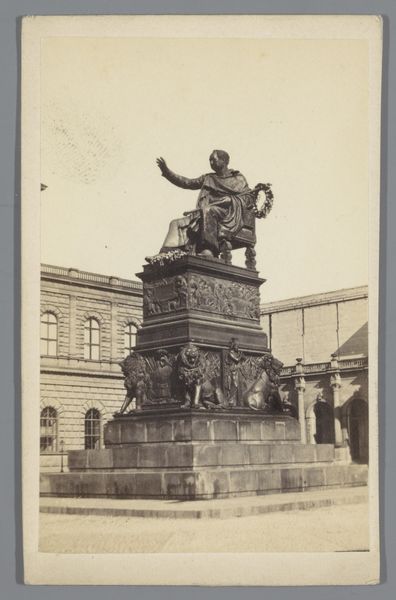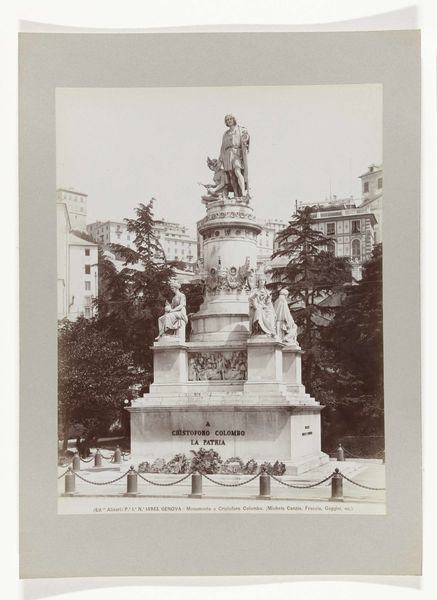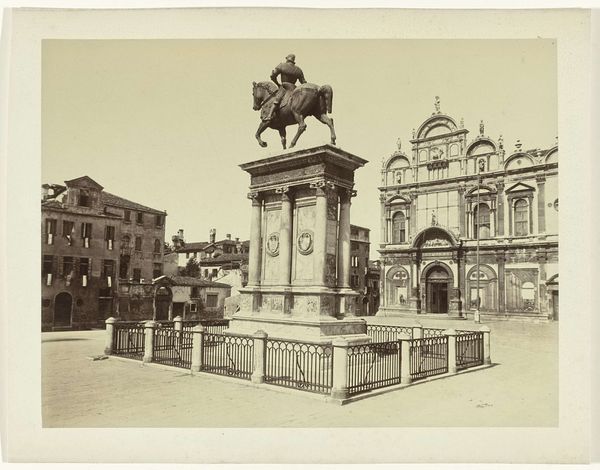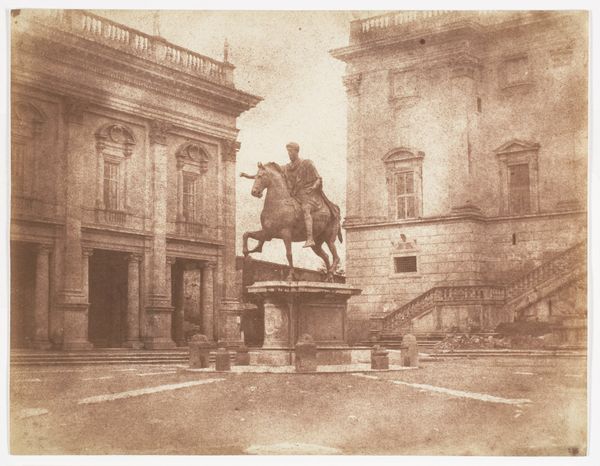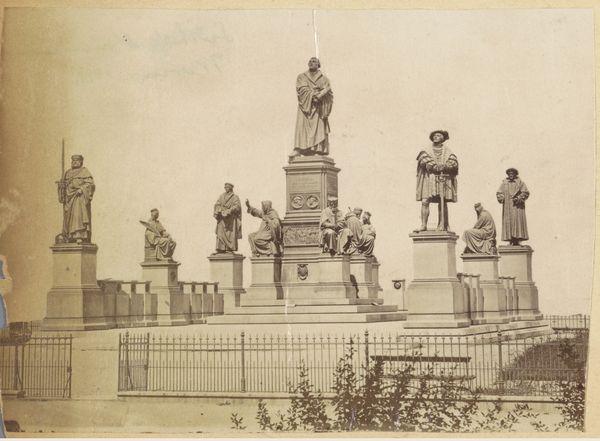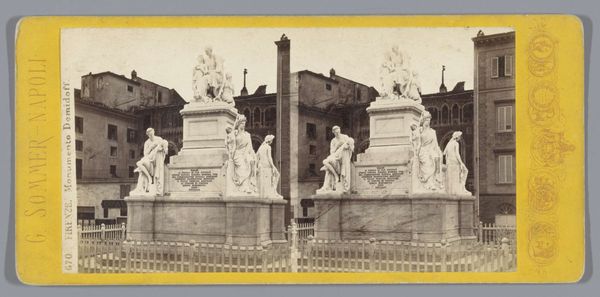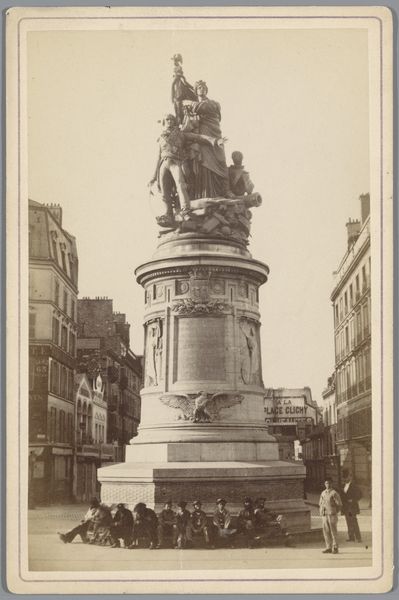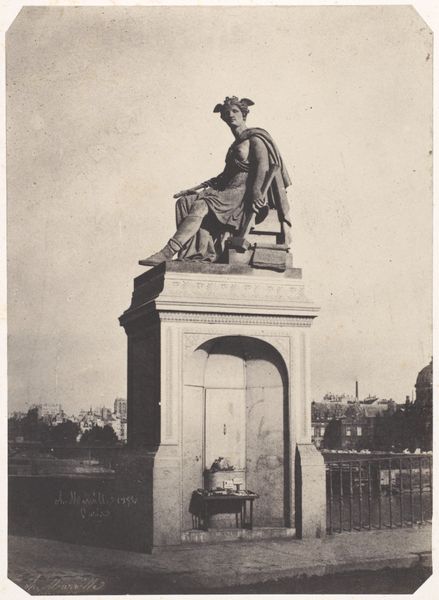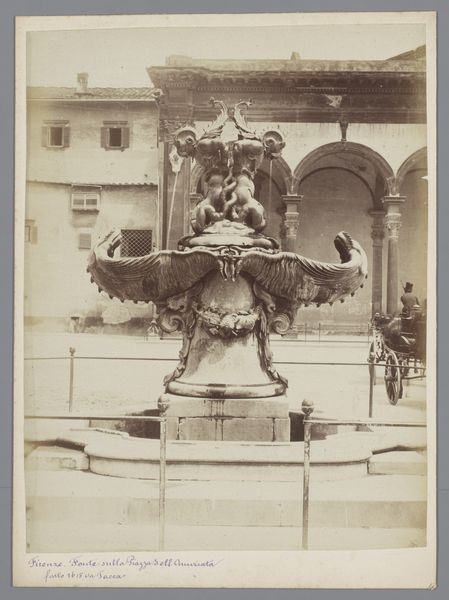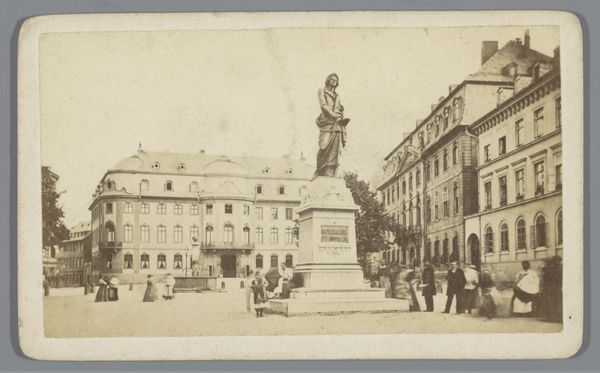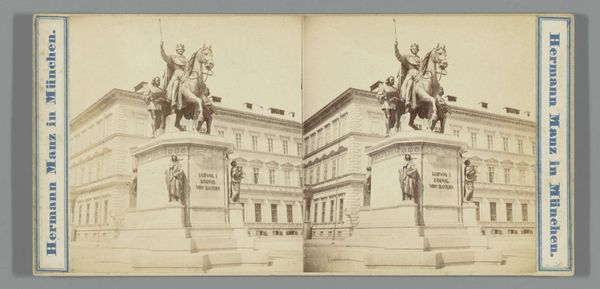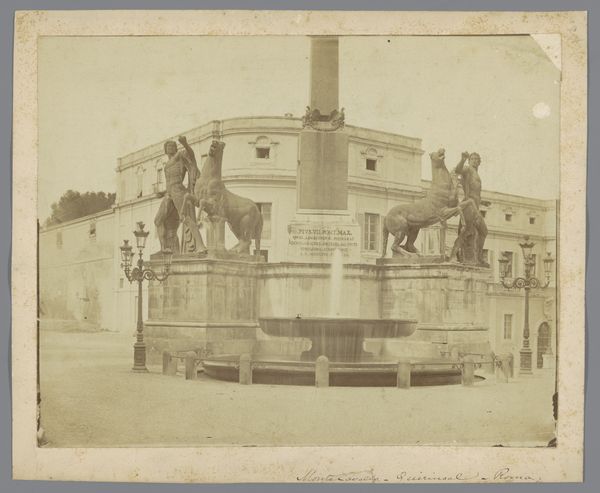
#
wedding photograph
#
photo restoration
#
wedding photography
#
outdoor photograph
#
archive photography
#
historical photography
#
unrealistic statue
#
wedding around the world
#
old-timey
#
horse
#
19th century
#
men
#
male-nude
#
building
Dimensions: Image: 8 11/16 × 11 5/16 in. (22 × 28.7 cm) Sheet: 12 1/8 × 18 1/2 in. (30.8 × 47 cm)
Copyright: Public Domain
Curator: Good morning. We're here at the Metropolitan Museum of Art to look closely at Eugène Constant’s photograph, “Monte Cavallo,” taken between 1848 and 1852. What are your first thoughts about this work? Editor: My first thought? Pure theatre. I mean, look at those statues! It feels staged, almost hilariously grandiose, like an over-the-top opera in stone and water. Curator: Precisely! The photograph captures the iconic sculptures atop the Quirinal Hill in Rome. Note the careful composition; Constant uses the architecture to create a dialogue between mass and space. It highlights the sculptures' monumentality, rooted in classical ideals of heroic nudity and equestrian power. Editor: Heroic nudity meets… splashy fountain? It's quite the juxtaposition! You've got these buff figures struggling with their steeds. And is it just me, or do the horses look more bewildered than powerful? They remind me of actors who forgot their lines on opening night. Curator: Interesting take. Consider, though, the visual rhetoric: the high vantage point flattening the perspective, the stark light emphasizing the textural contrasts between the stone, water, and sky. It compels us to see not only the subject but how it's constructed as an image. There’s a clear visual intent on creating symbolic weight. Editor: Oh, I see that intent. I’m just not sure it lands gracefully! For me, there’s a disconnect. All this hyper-masculine energy colliding with the quiet, sepia-toned stillness of the photograph. It feels… anachronistic, even in its own time. Like someone trying too hard to impress at a dinner party. Curator: That's an astute observation. Constant employs photography to monumentalize classical antiquity, but the medium itself, in its nascent stages, imposes a distinct temporal distance. This imbues the scene with a sense of longing. A yearning, perhaps, for a heroic past irrevocably lost. Editor: Maybe. Or maybe he just needed a tighter crop! Still, I appreciate the sheer chutzpah of it all. And that fountain is really doing its best. So what does this say about history and representation, eh? It leaves me thinking—a slightly bemused, yet thoughtful pondering. Curator: A worthy reflection. "Monte Cavallo," through Constant's lens, remains an intriguing document, a negotiation between classical aspiration and the emerging power of the photographic eye.
Comments
No comments
Be the first to comment and join the conversation on the ultimate creative platform.
